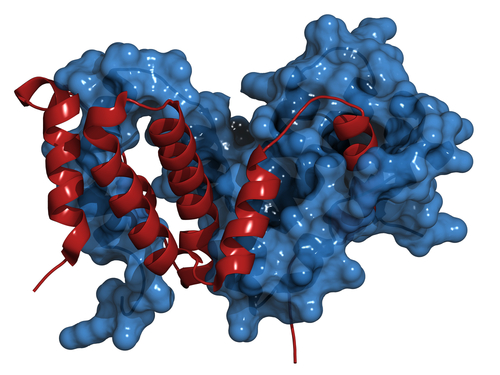Protein Plaques in Huntington’s Patients Have Distinct Structures That Hint at Disease Mechanisms
Written by |

Researchers found that the mutant huntingtin protein aggregates characteristic of Huntington’s disease have distinctive structural features, a discovery that might help to uncover the disease’s underlying mechanisms and lead to new therapies. The study, “Huntingtin exon 1 fibrils feature an interdigitated β-hairpin–based polyglutamine core,” was published in Proceedings of the National Academy of Sciences.
Huntington’s disease, an incurable and progressive neurodegenerative disease, is part of a group of illnesses called polyglutamine diseases. Along with at least eight other diseases, HD’s primary genetic cause is the CAG repeat (polyglutamine) expansion of a specific gene. This aberrant event leads to the formation of mutant huntingtin protein, which misfolds and aggregates, causing the deposits observed in patients’ brains and, ultimately, neuronal degeneration. However, the processes by which the mutation leads to the aberrant protein behavior and the exact nature of the protein deposits were poorly understood.
Researchers at the University of Pittsburgh School of Medicine used advanced nuclear magnetic resonance spectroscopy to directly assess and characterize huntingtin fibrils and other polyglutamine aggregates. Results showed that, unlike what previous computational models had suggested, protein clumps in the brains of Huntington’s patients have a distinctive structure, suggesting a specific aggregation method by the polyglutamine amyloid protein.
Further structural insights discovered by the scientists have significant implications for the theory behind the mechanisms of disease, protein misfolding, and aggregation. Moreover, this finding offers a potential new way to look at therapeutic strategies not only for Huntington’s disease, but for other related neurodegenerative diseases as well.
Senior investigator Dr. Patrick C.A. van der Wel, an assistant professor of structural biology at the School of Medicine, said in a press release: “This is exciting because it may suggest new ways to intervene with these disease-causing events. For the first time, we were able to really look at the protein structure in the core of the deposits formed by the mutant protein that causes Huntington’s. This is an important breakthrough that provides crucial new insights into the process of how the protein undergoes misfolding and aggregation.”





